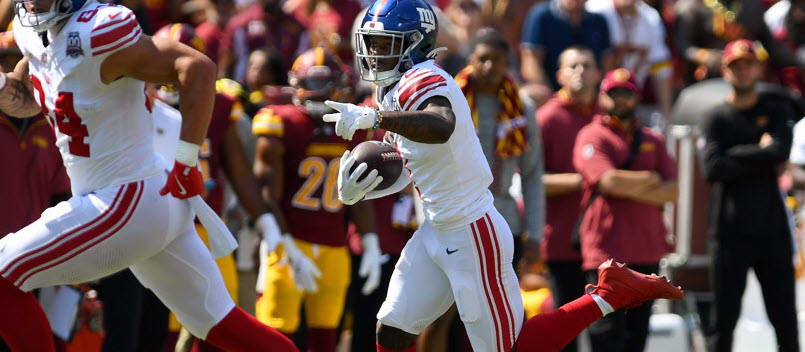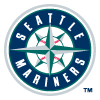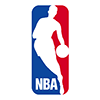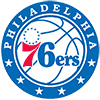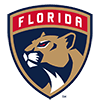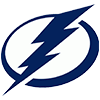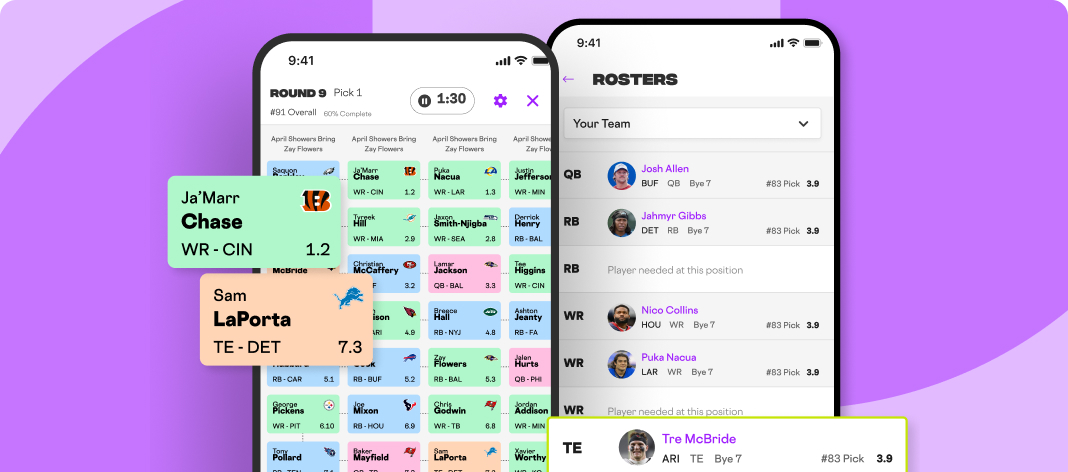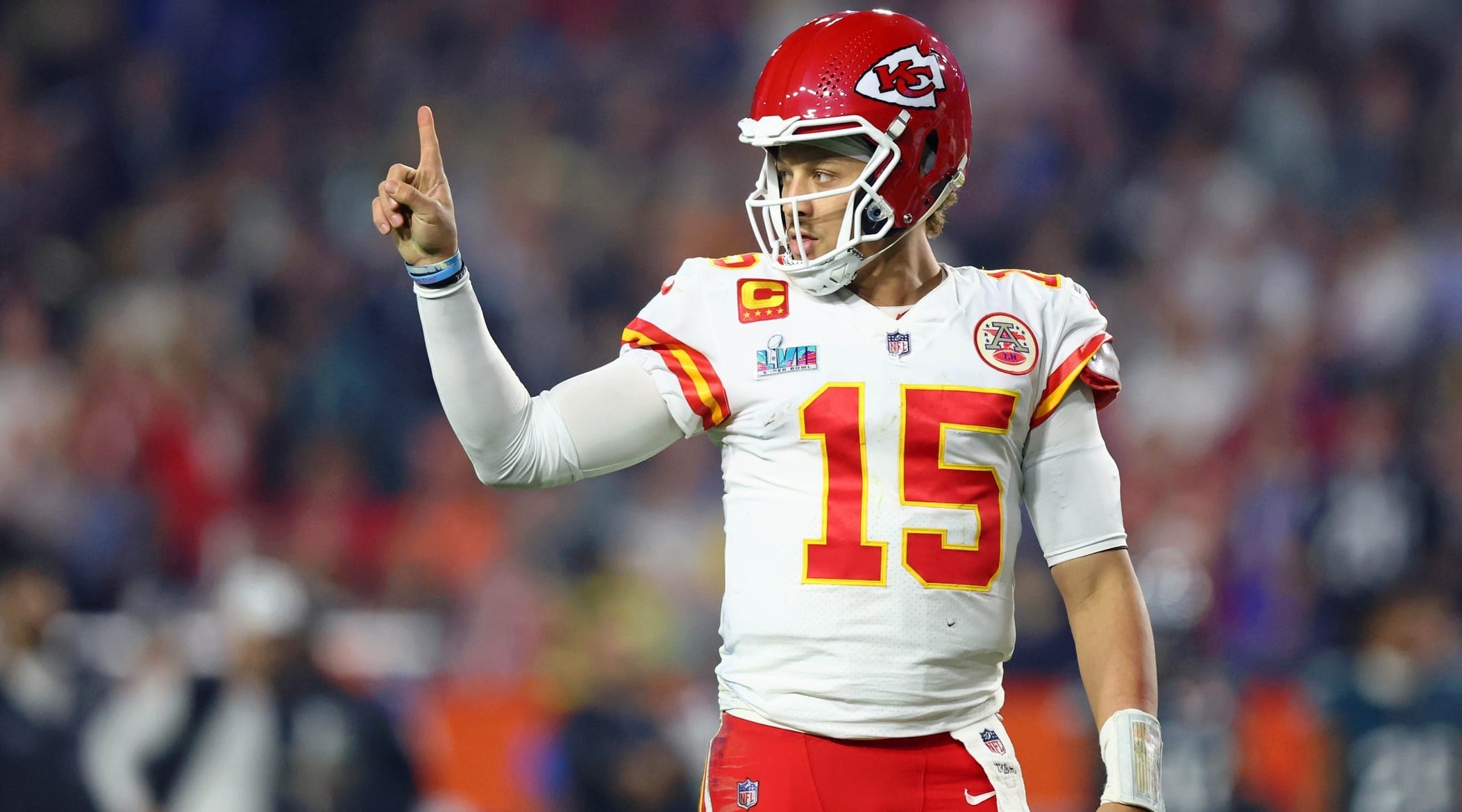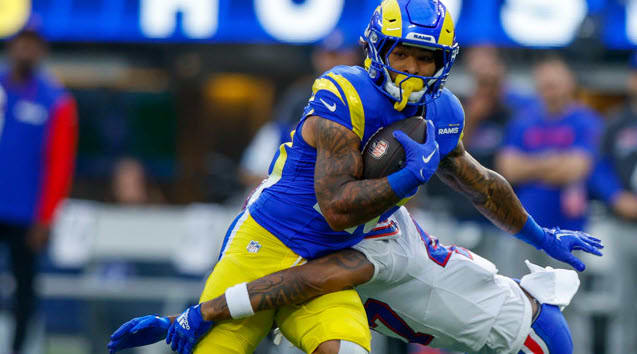This fantasy football Draft Strategy article looks at the current ADP and identify the best fantasy football draft strategy/strategies for the draft slots 7-through-9, which in a snake draft would leave you with one of selections 16-through-18 in the second round, 31-through-33 in the third round, 40-through-42 in the fourth round, 55-through-57 in the fifth round, and so on.
To read the article about slots 1-3, click here. To read the article about slots 4-6, click here.
The first three rounds are a crucial point in the determination of your fantasy football draft strategy not just because they should generally be your best players, but because the early course you set will determine your initial points of positional strength and weakness. It's important to weigh those strengths and weaknesses against your forecast options in upcoming rounds, devising a broader plan to account for those weaknesses so that you're as strong as possible for the draft slots you've been assigned.
You can't build a juggernaut right off the bat. It's a longer task that requires both foresight – knowing the ADP and your slot's placement relative to the fantasy football ADP – as well as in-draft adjustment so that you're not caught unprotected when the unexpected occurs.
It's important to track your own investments relative to the development of positional markets once your draft gets under way. This way you can create and adjust your plan in real time depending on which positional runs occur in
This fantasy football Draft Strategy article looks at the current ADP and identify the best fantasy football draft strategy/strategies for the draft slots 7-through-9, which in a snake draft would leave you with one of selections 16-through-18 in the second round, 31-through-33 in the third round, 40-through-42 in the fourth round, 55-through-57 in the fifth round, and so on.
To read the article about slots 1-3, click here. To read the article about slots 4-6, click here.
The first three rounds are a crucial point in the determination of your fantasy football draft strategy not just because they should generally be your best players, but because the early course you set will determine your initial points of positional strength and weakness. It's important to weigh those strengths and weaknesses against your forecast options in upcoming rounds, devising a broader plan to account for those weaknesses so that you're as strong as possible for the draft slots you've been assigned.
You can't build a juggernaut right off the bat. It's a longer task that requires both foresight – knowing the ADP and your slot's placement relative to the fantasy football ADP – as well as in-draft adjustment so that you're not caught unprotected when the unexpected occurs.
It's important to track your own investments relative to the development of positional markets once your draft gets under way. This way you can create and adjust your plan in real time depending on which positional runs occur in the draft, doing your best to stay at the front of such positional runs.
Sometimes you might need to participate in the tail-end of a positional run if you get caught in a truly difficult spot, but it's far more ideal to start a positional run so that you can get the top swipe of value at the position before the other drafters start scrambling for worse pieces of the pie after you. Having a viable plan for a balanced roster throughout various contingencies is key to keeping your draft picks occurring on your own terms instead of chasing market developments left and right.
(ADP data is from NFFC RotoWire Online Championship drafts back to 7/15)
Check out the industry-leading fantasy football live draft assistant to get custom rankings for your league and follow along with a live draft on most major platforms!
FIRST ROUND (Picks 7-through-9)
In this range you'll see plenty of variation, with the exception of the fact that the top six ADP is generally cut off from the rest of the first round. Those six players are Ja'Marr Chase, Bijan Robinson, Saquon Barkley, Jahmyr Gibbs, Justin Jefferson and CeeDee Lamb. You'll very occasionally see Gibbs, Jefferson or Lamb fall to the seventh pick or farther, but not on any basis you should plan on.
The more realistic options are usually Malik Nabers (8.25 NFFC), Ashton Jeanty (9.51), Christian McCaffrey (10.19), Brian Thomas (10.97), Amon-Ra St. Brown (11.0) and Puka Nacua (11.34).
Each of these players is a fine way to start your draft, although we can probably call Nabers the most prized of this tier. In Nacua's case the main thing to be aware of is Matthew Stafford's ongoing back issues, though the team is more recently assuring the 37-year-old will be fine for Week 1.
(The general strategy announcement that goes with each article):
Regardless of which player you take at this selection you'll want to budget you subsequent picks with your remaining needs in mind. For example, if you go with a running back then it might make it difficult to take a running back with your second or third-round selection, if only because most formats require three starting wide receivers but only two running backs.
That isn't to say you can't make running back the selection for two of your first three picks, but if you do so you might need to prepare to go a bit thin at wide receiver, because by the fourth round there generally are not any consensus WR2 types still on the board.
While there is no one best fantasy football draft strategy, you'll want to make sure you forge ahead in a way where you're not caught off guard in the subsequent rounds. It's one thing to knowingly take a risk (ie., two RBs in the first three rounds), but it's worse to be caught off guard because you can't control your recourse at that point.
Note: It's generally easier to execute a Zero RB fantasy football draft strategy – which basically just means going very cheap at running back – than it is to execute a cheap wide receiver strategy, especially in re-draft leagues. You only need to start two running backs in a 2RB-3WR-FLEX format, whereas at receiver you need to start at least three. Scraping together one or two running backs is easier than bargain hunting for three starting receivers.
SECOND ROUND (Picks 16-through-18)
Some of the likely potential options in this range De'Von Achane (12.51), Nico Collins (13.55), Drake London (14.57), Derrick Henry (14.64), A.J. Brown (19.13), Brock Bowers (20.12), Ladd McConkey (19.3), Bucky Irving (21.24) Jonathan Taylor (21.87), Garrett Wilson (22.07), Chase Brown (22.51) and Josh Jacobs (23.85).
As always, the earlier part of this ADP stretch is the most coveted one, and in this case at running back especially – most would agree there are potentially significant gaps between someone like Achane versus Brown or Jacobs.
Generally, though, any of these players is an acceptable selection. What makes it good pick or not is whether you make a selection that's coherent along with your first and even third-round picks. That's to say, if you went running back in Round 1 (Jeanty or McCaffrey), then it should be understood as a risky strategy to pursue a running back in the second round. Similarly, if you went wide receiver in Round 1 it arguably gives you more budget room to take a guy like Achane in Round 2.
If you want to go with Bowers here then wide receiver in the first round might be a little less risky than going with a running back. By the time your third-round pick comes up (31-through-33) there might not be an exciting WR1 type on the board.
THIRD ROUND (Picks 31-through-33)
By this round the available players at a given slot can vary more from draft to draft, but some of the most common selections include Jaxon Smith-Njigba (28.07), Tee Higgins (28.88), Lamar Jackson (29.25), Kyren Williams (29.31), Omarion Hampton (30.97), Marvin Harrison (31.46), Josh Allen (32.34), Breece Hall (33.57) and Davante Adams (33.72).
Back to the Bowers in Round 2 example – while it's suggested that a Round 1 wideout pick might be a preferable pairing to a Round 2 tight end than a Round 1 running back would, getting Smith-Njigba at this pick would probably be one of the best-case outcomes of going RB-TE in the first two rounds, in my opinion. Going RB-Bowers and then settling for Higgins, Harrison or Adams would be less exciting.
If you go wideout in Round 1 and Bowers in Round 2, though, pretty much all of the Round 3 options project as sufficient for how you'd be budgeting for them. More specifically, if Brian Thomas or whoever is your WR1 then any of Smith-Njigba, Higgins, Harrison or Adams would conventionally project as an acceptable WR2, while any of Williams, Hampton or Hall project as sufficient RB1s – especially if you boast a standout WR1/WR2 tandem, like you probably would in this hypothetical.
Similar to the dilemma of a Round 2 tight end, it makes it tough to budget for quarterbacks like Jackson and Allen, even though we all want them on our team. Spending a top-three round pick at tight end or quarterback can be challenging enough on your RB/WR supply, so needless to say going quarterback and tight end in the first three rounds would be particularly aggressive, and without much precedent for success.
If you go WR-WR or one each of RB/WR in the first two rounds, by contrast, then making room for Jackson or Allen becomes more conventionally viable. You'd probably need a player or two at RB/WR to slip past ADP to get strong consensus picks at those positions in the Round 4/Round 5/etc., but such things do happen sometimes and if you do pull off such a maneuver it could yield an especially strong team, even if easier said than done.
Check out our fantasy football ADP report for a comprehensive tool with live-updated ADP data for multiple league formats and sites.
FOURTH (Picks 40-through-42)
By this range the draft order will increasingly deviate from the ADP, so you'll need to be on your toes to watch for any anomalous market developments so you stay on the good end of any positional runs that might occur.
Pretty much all of Xavier Worthy (40.36), Rashee Rice (40.75), Mike Evans (40.79), Terry McLaurin (41.51), James Cook (42.22), Jayden Daniels (42.28), Joe Burrow (42.33), DJ Moore (42.49), George Kittle (42.96), DK Metcalf (42.96) and Kenneth Walker (42.97) are likely candidates for your fourth-round selection.
We know about Rice's incoming suspension and the slight holdout concerns in the cases of Cook and especially McLaurin, but other than those variables this range is straightforward. If you need a running back, you could do worse than Cook or Walker. If you need a wide receiver, then an Evans, Metcalf, etc., should suffice.
If you selected Tee Higgins previously then you'd arguably have additional reason to prefer Burrow at this pick, but Daniels' higher rushing upside makes him the conventionally preferred pick between the two quarterbacks, even in leagues that give six points per passing touchdown.
Kittle is sort of on an island in the tight end ADP – his two nearest points (Trey McBride, 26.6) and Sam LaPorta (68.21) are both rather far away – so it can feel tough to pinpoint the exact right time to take Kittle. He generally won't fall past your fourth-round selection, however, so it's a now-or-never moment. The appeal of Kittle is that he has the weekly upside to match even Bowers and McBride, but he has a lower weekly floor and worse durability projection than numerous other standout tight ends, including Bowers, McBride and LaPorta.
FIFTH ROUND (Picks 55-through-57)
With Kittle generally gone in the early 40s and LaPorta's ADP off at a distant 68.21, this draft pick is unlikely to leave you with a viable tight end option. Getting LaPorta in the sixth round is totally on the table, and Kittle in the fourth is a fully justifiable pick too, but in the fifth specifically we're probably looking exclusively at running back and wide receiver. This is assuming Jalen Hurts (49.78) goes before this selection, though if he makes it this far he could be a steal at quarterback.
The more likely options are the likes of Chuba Hubbard (50.61), George Pickens (52.9), Calvin Ridley (53.34), DeVonta Smith (54.49), Zay Flowers (56.52), Jaylen Waddle (57.99), James Conner (58.39), TreVeyon Henderson (58.58), Jerry Jeudy (61.75), Rome Odunze (61.99) and RJ Harvey (63.13).
As with each of the previous rounds, the conventional ADP options in this range are all justifiable picks, and the way it goes for your team has less to do with how specifically correct you were to take that player relative to another, and more to do with whether the player you're selecting has a soundly-projected function on your team. In other words, Jerry Jeudy may very well be a great pick here, but you probably should aim to enlist him as a WR3 instead of a WR1 or even WR2.
Similarly, while Chuba Hubbard may be a good pick here he is best understood as an RB2 type than an RB1. If you pick Hubbard as your RB1 here then the mission would need to be understood as a Zero RB task, and would necessitate more later-round running back selections to scrounge for sleepers than if Hubbard were deployed as your RB2. Conner, Henderson and Harvey all similarly project more as RB2 types than RB1.
Dominate your fantasy football league this season by exploring our comprehensive draft kit. Packed with expert insights, rankings and strategy tips, the kit features our interactive mock draft simulator to prepare you for every scenario. Streamline your draft-day decisions using our printable cheat sheet and stay ahead of the competition with our up-to-date rankings for all formats. RotoWire has everything you need to win. To learn more, subscribe now and start optimizing your roster today!


